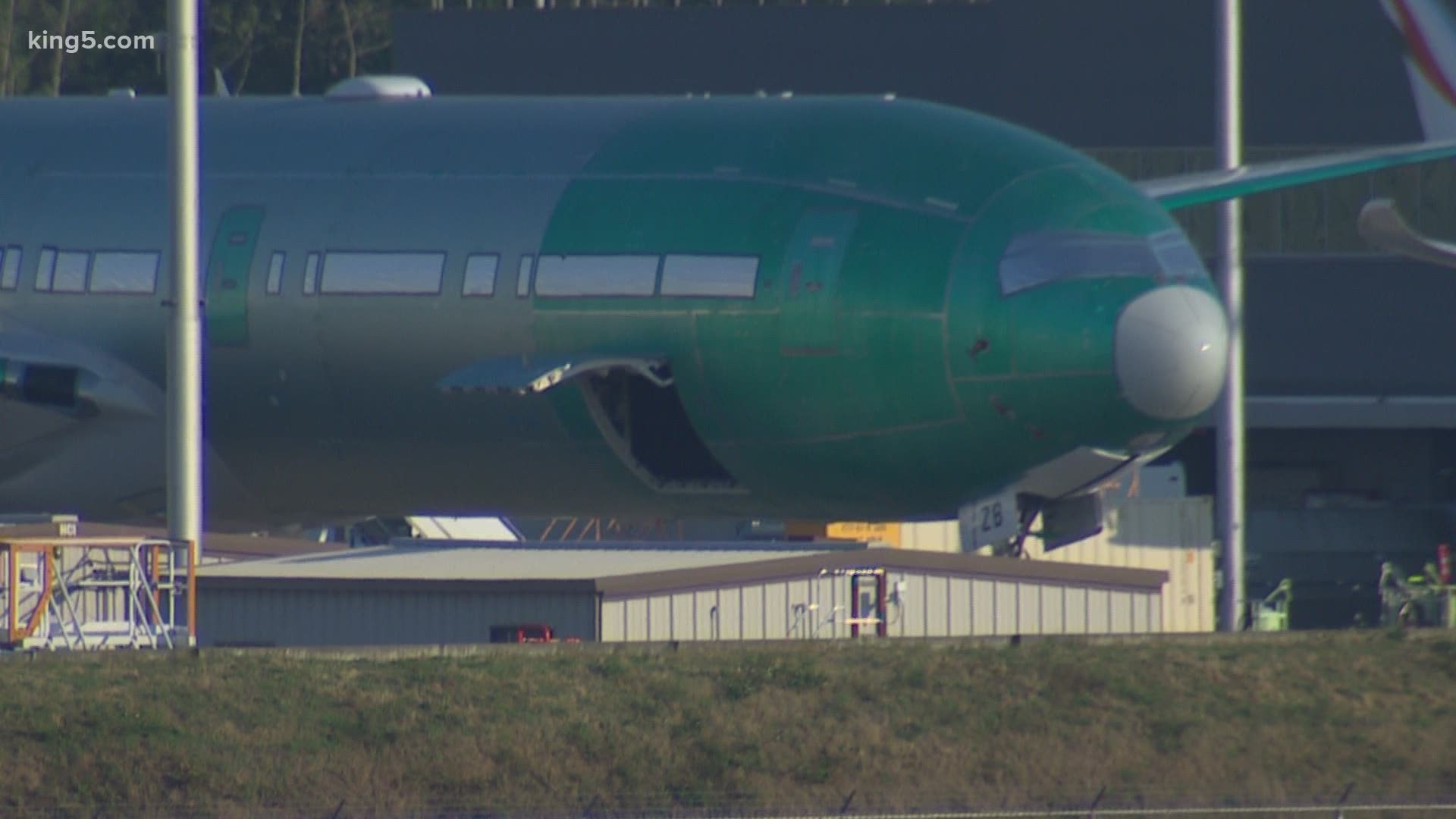EVERETT, Wash. — This week’s decision to move all 787 Dreamliner production out of Everett marks the first time Boeing has moved the commercial airliner assembly that started in Puget Sound out of Washington state.
Yes, other jets have gone away, the 707, 727, 757 — and by 2022, the Queen of the Skies, the 747, will also be gone.
But those programs did not fly away. Rather, those jets aged out as technology and demand changed.
In the case of the 787, Boeing moved its entire production line to its factories in South Carolina.
So, what about the next airplane, whether Boeing calls it the 797 or something else?
“I think Washington is still the incumbent, still the best place to build a jetliner,” said Richard Aboulafia of the Teal Group headquartered near Washington, D.C. “That doesn’t mean it wins.”
In 2018, Aboulafia authored a report prepared for the biggest unions at Boeing to handicap the state’s chances in building what was thought at the time to be Boeing’s next new jet, the New Mid Market Airplane, or NMA.
The NMA, an attempt to fill a gap between the largest 737 and the smallest 787, had already started to fade in early 2020 before COVID-19 struck. But Boeing says it’s still considering that project and other new airplane development programs not yet named.
COVID-19 has shaken the world’s airlines like nothing else in recent years. In turn, that has forced most of them to put their new airplane orders on hold.
With 787 production planned to drop to just six airplanes per month by mid-2021, Boeing said on Thursday it simply can’t afford to maintain two production lines, one in Everett and the other in North Charleston, South Carolina.
Boeing is coming off its peak of 14 787s per month, split between the two factories.
The company built the second assembly line in the right-to-work state of South Carolina in 2009, after a series of strikes in Puget Sound.
In 2003, Washington had fought off other states by offering massive tax breaks to Boeing and other commercial airplane manufacturers, even the manufacture of parts to build things here.
That break applied to other Boeing jets as well.
A decade later in 2013, Washington extended the tax breaks by another $8.7 billion to win the 777X. But with the 777X, there were strings attached that would keep that jet in Washington. Those strings did not exist for the 787.
In February, roughly half of those tax breaks went away in a World Trade Organization settlement over long fought subsidies to Europe’s Airbus and counter-charges by the European Union that the tax breaks to Boeing in Washington were also unfair subsidies.
COVID-19 will fade into history, people will fly again, the airlines will start making money again, and Boeing will begin rolling out its newest jet project, but where will it go?
“And you’re going to have a lot of governors tripping over themselves to offer incentive packages. And Boeing’s going to take advantage of that,” Aboulafia said. “That’s inevitable. And also inevitable is that Boeing will imply that Washington is at a disadvantage for whatever reason.”
Jon Holden, president of District 751 of the International Association of Machinists and Aerospace Workers, agreed that if a new Boeing jet is in the works, Washington likely will have to fight for it.
"I expect that no matter what happens in the future the company will threaten to leave, threaten to move airplane programs somewhere else," Holden said. "And it’s something we’ll always have to deal with. And we’ll always have to circle back and say this is the best place to build airplanes.“

